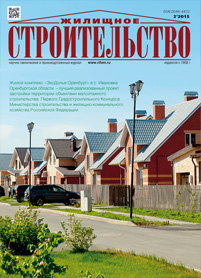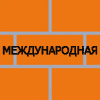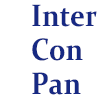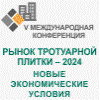Zhilishchnoe Stroitel'stvo №2

February, 2015
Table of contents
S.V. NIKOLAEV, Doctor of Sciences (Engineering) (ingil@ingil.ru), А.K. SHREJBER, Doctor of Sciences (Engineering), V.P. ETENKO, Doctor of Architecture OAO «Central Scientific-Research and Design Institute for Residential and Public Buildings (OAO TSNIIEP zhilishcha) (9, structure 3, Dmitrovskoye Hwy, 127434, Moscow, Russian Federation) Panel and Frame House Building is a New Stage of Large-Panel Construction Development
It is shown that the most prospective systems of construction of precast reinforced concrete is the system of panel-frame housing construction (or PFC system unlike FPC) which makes it possible to use advantages and maximally reduce disadvantages of panel and frame types of construction. The main innovative component of the PFC system is its versatility. The system of panel-frame housing construction makes it possible to develop and reconstruct the old city districts in complex and ensure the balanced structure for constructing residential houses of up to 25 storeys as well as schools, kindergarten, policlinics, and public buildings. Keywords: panel-frame housing construction, hollow core slab, off-shuttering concreting, staircase and elevator section, hollow core strengthener, panel house prefabrication, frame housing construction, cast-in-place housing construction. References
1. Sokolov B.S., Mironova Yu.V., Gataullina D.R. Ways of Overcoming of Crisis Situation in Large-Panel Housing Construction. Stroitel’nye Materialy [Construction Materials]. 2011. No. 3, pp. 4–6. (In Russian).
2. Tikhomirov B.I., Korshunov A.N. The line of bezopalubochny formation – efficiency plant with flexible technology. Stroitel’nye Materialy [Construction Materials]. 2012. No. 4, pp. 22–26. (In Russian).
3. Nikolaev S.V. Solution of Housing Problem in the Russian Federation on the Basis of Reconstruction and Technical Re-equipment of Housing Construction Industrial Base. Zhilishchnoe Stroitel'stvo [Housing Construction]. 2010. No. 2, pp. 2–5. (In Russian).
4. Ostretsov V.M., Magay A.A., Voznyuk A.B. , Gorelkin A.N. Flexible System of Panel Housing Construction. Zhilishchnoe Stroitel'stvo [Housing Construction]. 2011. No. 8, pp. 8–11. (In Russian).
5. Magay A.A. Нousing construction at the present stage. Zhilishchnoe Stroitel'stvo [Housing Construction]. 2012. No. 4, pp. 9–12. (In Russian).
6. Yumasheva E.I., Sapacheva L.V. The house-building industry and the social order of time. Stroitel'nye Materialy [Construction materiаls]. 2014. No. 10, pp. 3–11. (In Russian).
7. Patent RF 2521025. Pustotnaya plita s mnogopustotnymi usilitelyami [Hollow plate with multihollow amplifiers]. Nikolaev S.V., Blazhko V. R. Declared 12.04.2013. Published 27.06.2014. Bulletin No. 18. (In Russian).
8. Nikolaev S.V. Panel and Frame Buildings of New Generation. Zhilishchnoe Stroitel'stvo [Housing Construction]. 2013. No. 8, pp. 2–9. (In Russian).
9. Blazhko V.P. A Fastener for Connection of Structural Elements of a Panel Building. Zhilishchnoe Stroitel'stvo [Housing Construction]. 2014. No. 1–2, pp. 3–6. (In Russian).
B.S. SOKOLOV, Doctor of Science (Engineering), K.A. FABRICHNAYA, Candidat of Science (Engineering) The Kazan State University of Architecture and Construction (1, Zelenaya street, Kazan, 420043, Russian Federation) The Construction of Eco-Schools Using a Universal Industrial Frame Construction System UIFСS-Tatarstan
The article discusses the concept of designing school buildings, providing a high level of comfort and implementing the principles of ecological design, with current regulatory requirements, high speed and economy of construction. Proposed major planning decisions of buildings using the bearing frame system UIFCS and design principle of engineering systems based on modern energy saving technologies. Keywords: school, bearing system, environmental design, energy-saving technologies. References
1. Kabanova O. Pedagogicheskoe prostranstvo [A pedago gical space]. Project Russia. 1999. No. 12, pp. 33–37. (In Russian).
2. Jodidio Philip. Architecture now! Taschen. 2001, pp 396–401.
3. Urban style. Eco architecture. Evergreen. Köln. 2008, pp. 98–107.
4. Anisimov V.Yu. Problems of sustainable development architecture school buildings. Architecton: Izvestiya vuzov [Electronic resource]. 2011. No. 34. Access: http://archvuz. ru/2011_22/35. (In Russian).
5. Pat. 141473 RF, MPK E04V. Uuniversal industrial frame construction system UIFCS – Tatarstan / Sokolov B.S. Opubl. 10.06.2014. [Electronic resource] bank of patents. Access: http://bankpatentov.ru/node/597203. (In Russian).
6. Sokolov B.S. Antakov A.B., Fabrichnaya K.A. Design of preschool and school institutions with the use of universal industrial frame construction system (UIFCS) and large – size ceramic stones. Housing Construction. 2014. No. 11, pp. 7–9. (In Russian).
7. Sokolov B.S., Pozdeev V.M., Troshkov E.O. Feasibility study of practicality of using new column and slab connection in prefabricated reinforced concrete frameworks. Vestnik Vol gogradskogo gosudarstvennogo arkhitekturno-stroitelno- go universiteta. Ser.: Stroitelstvo i arkhitektura. 2013. No. 31 (50). Ch. 2. Stroitel'nye nauki, pp. 58–61. (In Russian).
8. Sokolov B.S. Teoriya silovogo soprotivleniya anizotropnykh materialov szhatiyu i ee prakticheskoe primenenie [The theory of the power of resistance to compression of anisotropic materials and its practical application]. Moscow: ASV, 2011. 160 p. (In Russian).
9. Sokolov B.S., Troshkov E.O. Comparison of the static calculation results of reinforced concrete flat plate floor system obtained by different methods. Izvestiya KGASU. 2014. No. 3 (29), pp. 82–87. (In Russian).
10. Fabrichnaya K.A. K stroitel'stvu detskikh doshkol'nykh uchrezhdenii v stesnennykh usloviyakh s ispol'zovaniem universal'noi karkasnoi sistemy stroitel'stva UIKSS-Tatarstan [Construction of kindergartens in cramped conditions using a universal industrial construction framing system UIFCS- Tatarstan]. Novoe v arkhitekture, proektirovanii stroitel'nykh konstruktsii i rekonstruktsii: Materialy VIII Vserossiiskoi (II Mezhdunarodnoi) konferentsii NASKR-2014. Cheboksary: Chuvashsky universitet. 2014, pp. 41–47. (In Russian).
A.A. BENUZH, Candidate of Sciences (Engineering) (abenuzh@gmail.com) E.N. ORENBUROVA Еngineer (9104805008@mail.ru) Moscow State University of Civil Engineering (26, Yaroslavskoe Highway, Moscow, 129337, Russian Federation). Сommisioning Process of the Building in Аccordance with BREEAM Internationally recognized certification system in the field of «green» building assess the quality of the commission-ing of specific criteria. The purpose of certain activities on commissioning of buildings is the maximum risk reduction, associated with incorrect or incomplete commissioning of building systems. This article describes the most important of these indicators, means of achieving them and international experience on the subject. Keywords: green construction, commissioning, commissioning specialist, certification, assessment, engineering systems. References
1. Telichenko V. I., Potapov A. D., Slesarev M. Ju., Shherbina E. V. Ekologicheskaya bezopasnost' stroitel'stva [Sustainable cons- truction]. Moscow: Arkhitektura-S. 2009. 311 p. (In Russian).
2. Retejum A.Ju. «Green» standards and sustainable development in the field of Architecture, Planning and Construction. Arhitektura i stroitel'stvo Rossii. 2014. No. 8, pp. 18–24. (In Russian).
3. Telichenko V.I. Integrated Safety Construction. Vestnik MGSU. 2010. No. 4, pp. 1–8. (In Russian).
4. Sergienko L.I., Podkolizin M.M. Green building as an ele ment of sustainable development of Russia. Jekologija urba nizirovannyh territorij. 2010. No. 1, pp.18–23. (In Russian).
5. Tabunshhikov Ju.A. Roadmap green building in Russia: Problems and Prospects. AVOK: Ventiljacija, otoplenie, kondicionirovanie vozduha, teplosnabzhenie i stroitel'naja teplofizika. 2014. No. 3, pp. 4–10. (In Russian).
6. Bubnov Jj.К. Commissioning electrical systems of buildings on the example of the United States. Zdanija vysokih tehnologij. 2014. No. 3, рр. 27–34. (In Russian).
7. Evan Mills. A Golden Opportunity for Reducing Energy Costs and Greenhouse Gas Emissions. Lawrence Berkeley National Laboratory. 2009. 65 p.
8. Telichenko V.I., Benuzh A.A. Review and classification of rating systems certification of buildings and structures. Vestnik Volgogradskogo gosudarstvennogo arhitekturno- stroitel'nogo universiteta. Serija: Stroitel'stvo i arhitektura. 2013. No. 31–1 (50), pp. 239–243. (In Russian)
Yu.A. GRACHEVA, Candidate of Sciences (Biology), Director (gracheva@ecounion.ru), S.M. GORDYSHEVSKY, Chairman of the Board NP “Ecological Union” (54, office 132, Fontanka Emb., 191002, St.-Petersburg, Russian Federation) Development of International Systems of Voluntary Ecological Certification The development of the eco-production market and international voluntary ecological certification systems, features of ecological marking of I, II and III types and their comparative characteristic, bodies and systems of certification, their symbols (eco-labelling), legal aspects of voluntary ecological certification in the Russian Federation, and development of voluntary ecological certification in Russia are considered. Keywords: ecological construction, ecological goods and services, ecolabelling, ecological declaration, life cycle assessment (LCA), voluntary ecological certification, legal regulation, The Global Ecolabelling Network, GEN. References
1. Matyagina A.M., Smirnova E.V. Ekologicheski otvetstvennyi biznes [Ekologicheski responsible business]. M.: FORUM, 2012. 192 pages.
2. Smirnova E.V. Ekologicheskaya markirovka. Rukovodstvo dlya biznesmenov i vdumchivykh pokupatelei. [Ekologicheskaya marking. The management for businessmen and thoughtful buyers]. M.: Zelenaya kniga, 2012. 128 p.
3. Dayman S.Yu., T.V. Ostrovkova, E.A. Zaik. Sistemy ekologicheskogo menedzhmenta dlya praktikov. [Systems of ecological management for practicians]. M.: RKhTU im. D.I. Mendeleeva, 2004. 281 pages.
4. Remizov A.N. On Stimulation of Environmentally Sustainable Architecture and Building. Zhilishhnoe stroitel’stvo [Housing Construction]. 2014. No. 3, рp. 41–43. (In Russian).
5. Sapacheva L.V. Ecosteady position of the Russian architects. Zhilishhnoe stroitel’stvo [Housing Construction]. 2010. No. 12, рp. 19–22. (In Russian).
6. Remizov A.N., Ladygina O.М. Stimulating the «green» construction. Zhilishhnoe stroitel’stvo [Housing Construction]. 2014. No. 3, рp. 36–39. (In Russian).
N.P. UMNYAKOVA, Candidate of Sciences (n.umniakova@mail.ru) NIISF RAACS (21, Lokomotivny Passage, 127238, Moscow, Russian Federation) Reduction in Heat Losses of a Behind Radiators Wall Surface The process of heat transfer through the behind radiator wall at presence or absence of the screen made of heat-reflecting insulation on its inner surface is considered. On the basis of the solution of balance equations of heat exchange of radiation between the heating device and the behind radiator wall, the formula which makes it possible to calculate the temperature on the surface of the behind radiator wall depending on the coefficient of radiation of surface material has been obtained. This makes it possible, on the basis of the conducted calculations, to assess the efficiency of using the screen made of reflecting heat insulation on the surface of the behind radiator wall at various structural decisions of external walls. Keywords: energy efficiency, reflecting heat insulation, coefficient of radiation, behind radiator wall, thermal resistance, heat losses. References
1. Akhremenkov A.A., Kuzmin V.A., Tsirlin A.M. Energy Efficiency of Coating the Inner Surface of Premises with Reflective Heat Insulation. Stroitel’nye Materialy [Construction Materials]. 2013. No. 12, pp. 65–67. (In Russian).
2. Umnyakova N.P.. Heat Protection of Cloused Air Spaces with Reflective Insulation. Zhilishchnoe Stroitel'stvo [Housing Construction]. 2014. No. 1–2, pp. 16–20. (In Russian).
3. Gagarin V.G., Dmitriyev K.A. The accounting of heattechnical not uniformity at an assessment of a heatshielding of protecting designs in Russia and the European countries. Stroitel'nye Materialy [Construction Materials]. 2013. No. 6, рр. 14–16. (In Russian).
4. Levin E.V., Okunev A.Yu., Umnyakova N.P., Choubin I.L. Osnovy sovremennoj stroitel'noj termografii. [Bases of a modern construction termografiya]. Moscow: NIISF RAACS. 2012. 176 p.
5. Royfе V.S. To justification of a choice of a nondestructive method of an assessment of heat-shielding properties of construction materials. Stroitel'nye Materialy [Construction Materials]. 2013. No. 6, pр. 22–23. (In Russian).
O.D. SAMARIN, Candidate of Sciences (Engineering) (samarin1@mtu-net.ru) Moscow State University of Civil Engineering (26, Yaroslavskoe Highway, 129337, Moscow, Russian Federation) Selection of the Optimal Combination of the Energy Saving Measures During Renewal of Educational Buildings The economical and energy expediency of using of the energy saving package during renewal of the educational building in terms of demands of SP 50.13330.2012 and of the Public Standard of the Russian Scientific and Technical Society of Builders is considered. The calculation results of design and required specific thermal performance and other energy indexes of the building using procedure of SP and of the Public Standard, of the investment costs for building enclosures and engineering systems, the summary heat consumption and other technical and economical parameters before and after renewal are presented. The analysis of obtained data is given and conditions of payment back of the assumed package of measures with comparison to the initial status of the object constructed according to the demands of SNiP II-3–79** which was active till the 1995th year using combined discounted costs are shown. Keywords: energy efficiency, energy consumption decrease, renewal, energy saving measures, combined discounted costs, payback term. References
1. Samarin O.D. Thermal physics. Energy saving. Energy efficiency. Moscow: ASV. 2014. 296 р.
2. Gorshkov A.S. Energy efficiency in construction: problems of standardizing and measures to decrease energy consumption of buildings. Inzhenerno-stroitel’ny zhurnal. 2010. No. 1, рр. 9–13. (In Russian).
3. Dylewski R., Adamczyk J. Economic and ecological indicators for thermal insulating building investments. Energy and Buildings. 2012. No. 54In Russian).
4. Lapinskiene V., Paulauskaite S., Motuziene V. The analysis of the efficiency of passive energy saving measures in office buildings. Papers of the 8th International Conference “Environmental Engineering”. Vilnius. 2011, рр. 769–775.
5. Samarin O.D. Problems of economics in maintenance of a building microclimate. 2nd ed., revised and suppl. Moscow: ASV. 2015. 134 p. (In Russian).
6. Gagarin V.G. Economical analysis of increase of thermal performance level of building enclosures. Stroitel’nye materialy [Construction Materials]. 2008. No. 8, рр. 41–47. (In Russian).
7. Gagarin V.G. Macroeconomic features of justification of energy saving measures during increase of thermal performance of building enclosures. Stroitel’nye materialy [Construction Materials]. 2010. No. 3, рр. 8–16. (In Russian).
R.M. ALOYAN, Doctor of Sciences (Engineering), Corresponding Member of RAACS,
A.M. IBRAGIMOV, Doctor of Sciences (Engineering), (igasu_alex@mail.ru),
A.N. LOPATIN, Candidate of Sciences (Engineering), E.A. VINOGRAY, Engineer
Ivanovo State Polytechnic University (20, 8 Marta Street, 153037 Ivanovo, Russian Federation)
Monitoring of Conditions of Zero Cycle Structures of Multistory Residential Building after a Long Break
In the course of the design and construction of high-rise buildings located in coastal zones, in addition to the traditional geological surveys, it is necessary to
conduct hydro-geological studies. For continuation of construction after a long break, long-term measures for monitoring the change in conditions of foundations
under difficult hydro-geological conditions of coastal areas are of great importance. These changes can lead to the disruption of normal operation of structures.
On the basis of monitoring of an object (the city of Ivanovo) after a long break, it is shown that it is necessary to provide engineering and technical measures
(construction solutions) for reducing specified (design) loads on the soil base of foundations.
Keywords: monitoring, earth base, water erosion, suffusion, cracks, hydro-geological conditions.
References
1. Ibragimov A.M., Lopatin A.N., Guschin A.V., Vinogray E.A. Technical diagnostics of the zero cycle 17-storey residen tial building with parking in Ivanovo. Zhilishchnoe Stroitel'stvo [Housing Construction]. 2014. No. 1, pp. 48–51. (In Russian).
2. Shishkin V.Ya., Pogorelov A.E., Makeev V.A. Strengthe ning of the Existing Development at Construction of a Building with a Foundation Pit of 18–20 m. Zhilishchnoe Stroitel'stvo [Housing Construction]. 2011. No. 1, pp. 32–38. (In Russian).
3. Semenov A.S Organization of technical inspection of buildings of housing stock . Zhilishhnoe stroitel’stvo [Housing Construction]. 2010. No. 12, рр. 23–25. (In Russian).
4. Vorobjev S.A., Sotnikov D.Yu. About efficiency of use of methods of geodetic control at inspection of technical condition of the unfinished and not preserved building. Izvestiya Oryol state technical university: Construction and Transport series. 2006. No. 33-4, рр. 17–19. (In Russian).
5. Lantsov I.V. Ponyatiye of object of incomplete construction and its feature. Izvestiya Irkutskoi gosudarstvennoi ekonomicheskoi akademii (Baikal'skii gosudarstvennyi universitet ekonomiki i prava). 2011. No. 6, рр. 54. (In Russian).
1. Ibragimov A.M., Lopatin A.N., Guschin A.V., Vinogray E.A. Technical diagnostics of the zero cycle 17-storey residen tial building with parking in Ivanovo. Zhilishchnoe Stroitel'stvo [Housing Construction]. 2014. No. 1, pp. 48–51. (In Russian).
2. Shishkin V.Ya., Pogorelov A.E., Makeev V.A. Strengthe ning of the Existing Development at Construction of a Building with a Foundation Pit of 18–20 m. Zhilishchnoe Stroitel'stvo [Housing Construction]. 2011. No. 1, pp. 32–38. (In Russian).
3. Semenov A.S Organization of technical inspection of buildings of housing stock . Zhilishhnoe stroitel’stvo [Housing Construction]. 2010. No. 12, рр. 23–25. (In Russian).
4. Vorobjev S.A., Sotnikov D.Yu. About efficiency of use of methods of geodetic control at inspection of technical condition of the unfinished and not preserved building. Izvestiya Oryol state technical university: Construction and Transport series. 2006. No. 33-4, рр. 17–19. (In Russian).
5. Lantsov I.V. Ponyatiye of object of incomplete construction and its feature. Izvestiya Irkutskoi gosudarstvennoi ekonomicheskoi akademii (Baikal'skii gosudarstvennyi universitet ekonomiki i prava). 2011. No. 6, рр. 54. (In Russian).
A.M. IBRAGIMOV, Doctor of Sciences (Engineering), S.S. LAVRINOVICH, Engineer
Ivanovo State Polytechnic University (20, 8 Marta Street, 153037, Ivanovo, Russian Federation)
Physical-Mathematical Statement of a Problem of Non-Stationary Heat Transfer through Multilayer Enclosing
Structure in the Course of Its Heat-Moisture Treatment
Problems that occur during the heat-moisture treatment of three-layer reinforced concrete panels with foam polystyrene insulation at prefabricated concrete
plants are considered. The temperature of the heat-moisture treatment should not exceed the temperature of the destructive decomposition of polystyrene. A
cell model of non-linear heat transfer through the multilayer flat wall under various initial and boundary conditions makes it possible to calculate the distribution
of the temperature through the thickness of the multilayer reinforced concrete structure at any point in time at all stages of the heat-moisture treatment. A brief
description of the mathematical model of heat transfer in multilayer structure is presented.
Keywords: resource saving, heat-moisture treatment, mathematical modeling, heat transfer, Markov chains
References
1. Fedosov S.V., Ibragimov A.M., Gnedina L.Yu. Problems of Three-Layer Enclosing Structures. Stroitel’nye Materialy [Construction materiаls]. 2012. No. 71, pp. 9–12. (In Russian).
2. Fedosov S.V., Rumyantseva V.E., Krasilnikov I.V., Kasianen ko N.S. Тheoretical and Experimental Studies of Processes of Corrosion of the First Kind of Cement Concretes in the Pres ence of Inner Source of Mass. Stroitel’nye Materialy [Con struction materiаls]. 2013. No. 6, pp. 44–47. (In Russian).
3. Karpenko N.I., Yarmakovsky V.N. Main Directions of Resource and Energy Saving during the Construction and Operation of Buildings. Part 2 (continuation). Resource and Energy Saving at the Stage of Installation (erection) of Structural System of a Building and its Operation. Stroitel’nye Materialy [Construction materiаls]. 2013. No. 9, pp. 46–55. (In Russian).
4. Fedosov S.V., Elin N.N., Mizonov V.E., Sakharov A.A. A Cellular Model of Moisture Freezing and Thawing in En closing Structures. Stroitel’nye Materialy [Construction materiаls]. 2013. No. 3, pp. 70–73. (In Russian).
5. Mizonov V.E., Elin N.N., Barantseva E.A. Modeling and op timization of a thermal state in the partitioned volumes with internal sources of heat. Ivanovo: The Ivanovo state power university of V.I. Lenin, 2010. 128 p.
6. Fedosov S.V., Ibragimov A.M., Gushchin A.V. Influence of heatmoist processing on durability of the ferroconcrete pro tecting designs and products. Stroitel’nye Materialy [Con struction materiаls]. 2006. No. 9, pp. 7–8. (In Russian).
7. Fedosov S.V., Mizonov V.E., Barantseva E.A., Grabar Yu.G., Navinsky I.V., Folomeev D.Yu. Modeling of warming up of wall panels at their heat treatment. Stroitel’nye Materialy [Con struction materiаls]. 2007. No. 7, pp. 86–88. (In Russian).
8. Fedosov S.V., Ibragimov A.M., Gushchin A.V. Application of methods of mathematical physics for modeling masso-and power transfer in technological processes of the construc tion industry. Stroitel’nye Materialy [Construction materiаls]. 2008. No. 4, pp. 65–67. (In Russian).
1. Fedosov S.V., Ibragimov A.M., Gnedina L.Yu. Problems of Three-Layer Enclosing Structures. Stroitel’nye Materialy [Construction materiаls]. 2012. No. 71, pp. 9–12. (In Russian).
2. Fedosov S.V., Rumyantseva V.E., Krasilnikov I.V., Kasianen ko N.S. Тheoretical and Experimental Studies of Processes of Corrosion of the First Kind of Cement Concretes in the Pres ence of Inner Source of Mass. Stroitel’nye Materialy [Con struction materiаls]. 2013. No. 6, pp. 44–47. (In Russian).
3. Karpenko N.I., Yarmakovsky V.N. Main Directions of Resource and Energy Saving during the Construction and Operation of Buildings. Part 2 (continuation). Resource and Energy Saving at the Stage of Installation (erection) of Structural System of a Building and its Operation. Stroitel’nye Materialy [Construction materiаls]. 2013. No. 9, pp. 46–55. (In Russian).
4. Fedosov S.V., Elin N.N., Mizonov V.E., Sakharov A.A. A Cellular Model of Moisture Freezing and Thawing in En closing Structures. Stroitel’nye Materialy [Construction materiаls]. 2013. No. 3, pp. 70–73. (In Russian).
5. Mizonov V.E., Elin N.N., Barantseva E.A. Modeling and op timization of a thermal state in the partitioned volumes with internal sources of heat. Ivanovo: The Ivanovo state power university of V.I. Lenin, 2010. 128 p.
6. Fedosov S.V., Ibragimov A.M., Gushchin A.V. Influence of heatmoist processing on durability of the ferroconcrete pro tecting designs and products. Stroitel’nye Materialy [Con struction materiаls]. 2006. No. 9, pp. 7–8. (In Russian).
7. Fedosov S.V., Mizonov V.E., Barantseva E.A., Grabar Yu.G., Navinsky I.V., Folomeev D.Yu. Modeling of warming up of wall panels at their heat treatment. Stroitel’nye Materialy [Con struction materiаls]. 2007. No. 7, pp. 86–88. (In Russian).
8. Fedosov S.V., Ibragimov A.M., Gushchin A.V. Application of methods of mathematical physics for modeling masso-and power transfer in technological processes of the construc tion industry. Stroitel’nye Materialy [Construction materiаls]. 2008. No. 4, pp. 65–67. (In Russian).
A.A. LUKASH, Candidate of Sciences (Engineering) (mr.luckasch@yandex.ru), N.P. LUKUTTSOVA, Doctor of Sciences (Engineering)
Bryansk State Academy of Engineering and Technology (3, S.T. Dimitrova prosp., 241037, Bryansk, Russian Federation)
Methods for calculating the heat conductivity of enclosing structures of variable cross-section for defining the thermal resistance of rounded logs, based on the
fact that regularly repeating sections are selected in enclosing structures, their areas are determined, and their averaged thickness is the ratio between the square
of the repeating section and its width, are offered. Results of the calculation of thermal resistance of enclosing structures made of rounded logs depending
on their diameters are presented. It is established that it is necessary to use additional heat insulation in houses made of rounded logs because the thermal
resistance of these structures is 2–3 times less than permissible. The necessity of regulation of thickness, moisture content and thermal resistance of enclosing
structures made of rounded logs is substantiated. A method for reducing the heat conductivity by means of creation of dead air spaces inside the rounded logs
is proposed; to prevent the inflow of cold air in winter it is necessary to insert plugs in butts of holes. In rounded logs with a through hole of 0,08 m diameter, the
thermal resistance increases by 60%.
Keywords: construction, thermal resistance, heat conductivity, rounded log.
References
1. Construction Norms and Rules 23-02–2003. Thermal protection of buildings. Instead of Construction Norms and Rules 23-01–99. Introduced 01.10.2003. Moscow: NIISF RAASN. 2003. 36 p. (In Russian).
2. Set of Rules 23-101–2004. Design of thermal protection of buildings. Instead Set of Rules 23-101–2000. Introduced. 01.06.2004. Moscow: NIISF. 2004. 122 p. (In Russian).
3. Lukash A.A., Grishina E.S. Houses made of rounded logs: prospects of manufacture, shortcomings and ways of their elimination. Stroitel’nye Materialy [Construction Materials]. 2013. No. 4, pp. 109–110. (In Russian).
4. Patent RF for useful model №133771. Ustroistvo dlya sverleniya glubokikh otverstii v drevesine [Device for deep hole drilling in wood] / Akhmedov G., Grishina E., Ivanov V., Lukash A. Declared 23.01.2013. Published 27.10.2013. (In Russian).
5. Patent RF for useful model №135232 IPC F26 IPC F26 B9/10, F26 In 3/04. Ustroistvo dlya konvektivnoi sushki otsilindrovannykh breven [Device for convective drying of cylindrical logs] / Grishina E., Akhmedov G., Ivanov V., Lukash A. Declared 23.01.2013. Published 20.09.2013. Bulletin No. 26. 3 p. (In Russian).
1. Construction Norms and Rules 23-02–2003. Thermal protection of buildings. Instead of Construction Norms and Rules 23-01–99. Introduced 01.10.2003. Moscow: NIISF RAASN. 2003. 36 p. (In Russian).
2. Set of Rules 23-101–2004. Design of thermal protection of buildings. Instead Set of Rules 23-101–2000. Introduced. 01.06.2004. Moscow: NIISF. 2004. 122 p. (In Russian).
3. Lukash A.A., Grishina E.S. Houses made of rounded logs: prospects of manufacture, shortcomings and ways of their elimination. Stroitel’nye Materialy [Construction Materials]. 2013. No. 4, pp. 109–110. (In Russian).
4. Patent RF for useful model №133771. Ustroistvo dlya sverleniya glubokikh otverstii v drevesine [Device for deep hole drilling in wood] / Akhmedov G., Grishina E., Ivanov V., Lukash A. Declared 23.01.2013. Published 27.10.2013. (In Russian).
5. Patent RF for useful model №135232 IPC F26 IPC F26 B9/10, F26 In 3/04. Ustroistvo dlya konvektivnoi sushki otsilindrovannykh breven [Device for convective drying of cylindrical logs] / Grishina E., Akhmedov G., Ivanov V., Lukash A. Declared 23.01.2013. Published 20.09.2013. Bulletin No. 26. 3 p. (In Russian).
L.M. KOLCHEDANTSEV
1
, Doctor of Sciences (Engineering), S.V. VOLKOV
1
, Candidate of Sciences (Engineering) (wsw_1953@mail.ru),
A.D. DROZDOV
2
, Candidate of Sciences
1 Saint-Petersburg State University of Architecture and Civil Engineering (4, 2nd Krasnoarmeyskaya Street, 190005, St. Petersburg, Russian Federation)
2 OOO “A-Stroy-plus” (17, Liter A, of. 4-N, Verbnaya Street, 197375, St. Petersburg, Russian Federation) Arrangement of the Construction Site for Erecting High-Rise Buildings when Placing On-Site Concrete Mixing Unit Issues of the organizational-technological design of high-rise buildings construction with due regard for the existing experience in the design and erection of multistory buildings are considered. To solve such problems it is proposed to locate an on-site concrete mixing unit (CMU) on the territory of the construction site for erection of a cast-in-place reinforced concrete framework with the object of realizing some efficient techniques. Parameters of the on-site CMU have been determined on the example of the designed high-rise building in Saint-Petersburg. The reasonability of locating the on-site concrete mixing unit on the construction site is substantiated by the fact that in the course of high rise building erection, concretes of different classes (from B25 up to B50) are used, highly efficient modified additives are applied, fiber reinforcement is implemented in combination with bar reinforcement, concrete works are carried out with the use of heated concrete mixes with after-curing by the “thermos” method, and various schemes of concrete mixes supply to the concreting place are realized. Keywords: organizational-technological design of high-rise building construction, arrangement of construction site, technology and organization of construction References
1. Kolchedantsev L.M., Osipenkova I.G. Features of organizational and technological decisions at construction of high-rise buildings. Zhilishchnoe Stroitel'stvo [Housing Construction]. 2013. No. 9, pp. 1– 3. (In Russian).
2. Pochinchuk N.G., Pakhomenko A.V., Fefelov A.V. Up-to-Date Automated System of Control of Technological Processes of a Concrete Mixing Plant. Zhilishchnoe Stroitel'stvo [Housing Construction]. 2012. No. 7, pp. 32–37. (In Russian).
3. Kolchedantsev L.M., Zubov N.A., Roshchupkin N.P., Kolchedantsev A.L. Structural-Technological Conceptions of a Precast-Monolithic Building of Economy Class. Stroitel'nye Materialy [Construction materiаls]. 2012. No. 4, pp. 17–19. (In Russian).
4. Markovskiy M.A. High-rise construction from monolithic reinforced concrete. Architecture and construction. 2011. No. 2 (220), pp. 44–47.
5. Kapriyelov S.S., Sheynfeld A.V., Kiselyova Yu.A. Peculiarities of System of Control Of High-Strength Concretes Quality. Stroitel'nye Materialy [Construction materiаls]. 2012. No. 2, pp. 63–68. (In Russian).
1 Saint-Petersburg State University of Architecture and Civil Engineering (4, 2nd Krasnoarmeyskaya Street, 190005, St. Petersburg, Russian Federation)
2 OOO “A-Stroy-plus” (17, Liter A, of. 4-N, Verbnaya Street, 197375, St. Petersburg, Russian Federation) Arrangement of the Construction Site for Erecting High-Rise Buildings when Placing On-Site Concrete Mixing Unit Issues of the organizational-technological design of high-rise buildings construction with due regard for the existing experience in the design and erection of multistory buildings are considered. To solve such problems it is proposed to locate an on-site concrete mixing unit (CMU) on the territory of the construction site for erection of a cast-in-place reinforced concrete framework with the object of realizing some efficient techniques. Parameters of the on-site CMU have been determined on the example of the designed high-rise building in Saint-Petersburg. The reasonability of locating the on-site concrete mixing unit on the construction site is substantiated by the fact that in the course of high rise building erection, concretes of different classes (from B25 up to B50) are used, highly efficient modified additives are applied, fiber reinforcement is implemented in combination with bar reinforcement, concrete works are carried out with the use of heated concrete mixes with after-curing by the “thermos” method, and various schemes of concrete mixes supply to the concreting place are realized. Keywords: organizational-technological design of high-rise building construction, arrangement of construction site, technology and organization of construction References
1. Kolchedantsev L.M., Osipenkova I.G. Features of organizational and technological decisions at construction of high-rise buildings. Zhilishchnoe Stroitel'stvo [Housing Construction]. 2013. No. 9, pp. 1– 3. (In Russian).
2. Pochinchuk N.G., Pakhomenko A.V., Fefelov A.V. Up-to-Date Automated System of Control of Technological Processes of a Concrete Mixing Plant. Zhilishchnoe Stroitel'stvo [Housing Construction]. 2012. No. 7, pp. 32–37. (In Russian).
3. Kolchedantsev L.M., Zubov N.A., Roshchupkin N.P., Kolchedantsev A.L. Structural-Technological Conceptions of a Precast-Monolithic Building of Economy Class. Stroitel'nye Materialy [Construction materiаls]. 2012. No. 4, pp. 17–19. (In Russian).
4. Markovskiy M.A. High-rise construction from monolithic reinforced concrete. Architecture and construction. 2011. No. 2 (220), pp. 44–47.
5. Kapriyelov S.S., Sheynfeld A.V., Kiselyova Yu.A. Peculiarities of System of Control Of High-Strength Concretes Quality. Stroitel'nye Materialy [Construction materiаls]. 2012. No. 2, pp. 63–68. (In Russian).
 |
 |
 |
 |
 |
 |
 |
